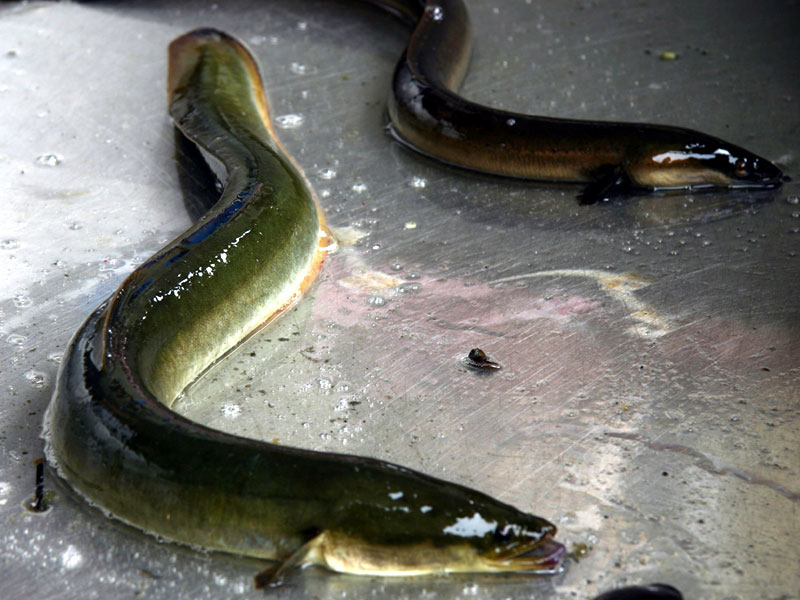The Eel (el Bisàto)
The reproduction of the eel has been a mystery for centuries, since also the biggest male specimens seemed lacking of reproductive organs. Therefore, since ancient times, fanciful hypotheses have been formulated: among them, the theory according to which the animal could develop from the scales produced by adult eels rubbing themselves against stones. Only between the late 18th century and the mid-19th century it was discovered that the animal sexually reproduced, but there were still doubts on the mating place and the place where the eggs hatched, while many people still believed Aristotle's theory, according to which eels were born from small worms forming in the rainwater ponds.
Towards the end of the 17th century, it was noticed that large groups of eels used to move along the river to the sea during the autumn nights, but still the theory according to which they would migrate far away to reproduce remained only a theory. Only in the late 19th century, two Italian biologists gathered several small-size transparent specimens they observed for many weeks.
They found out that those small animals they considered to be Leptocephalus brevirostris were instead larvae which slowly developed into young eels.
Later, even smaller specimens were discovered in Sargasso Sea, in the north-east of the West Indies, finally casting light on the issue: from the rivers of Western Europe, eels travel for over 4,000 kilometers to spawn their eggs into the depth of the Sargasso Sea in spring. When, at the beginning of the summer, the eggs hatch, the larvae come to the surface to eat plankton. They are less than one cm long and, since they can't swim yet, they let themselves be transported by the ocean currents across the Atlantic Ocean. When they are about three years old, they have reached about 8 cm of length and have finally reached the mouths of the European rivers, while they are still gradually transforming into young eels, called "blind" eels. During this stage, they swim along the river to its source in large groups, and they remain there for long periods, from 7 to 20 years.
Also the American eels coming from the eastern coast of North America spawn their eggs in the Sargasso Sea, but in a different area. Their larvae reach then the coasts of North America in about one year, always transported by the current.
Many doubts on this animal still remain, since up to this moment no European eels going back to the Sargasso Sea have been found. Another theory is that only one species, the American species, exists: it would give origin to the new generation migrating to spawn the eggs. The European species would be the result of the eggs which broke open in milder waters and would reach the European waters only to die there, without reproducing.







